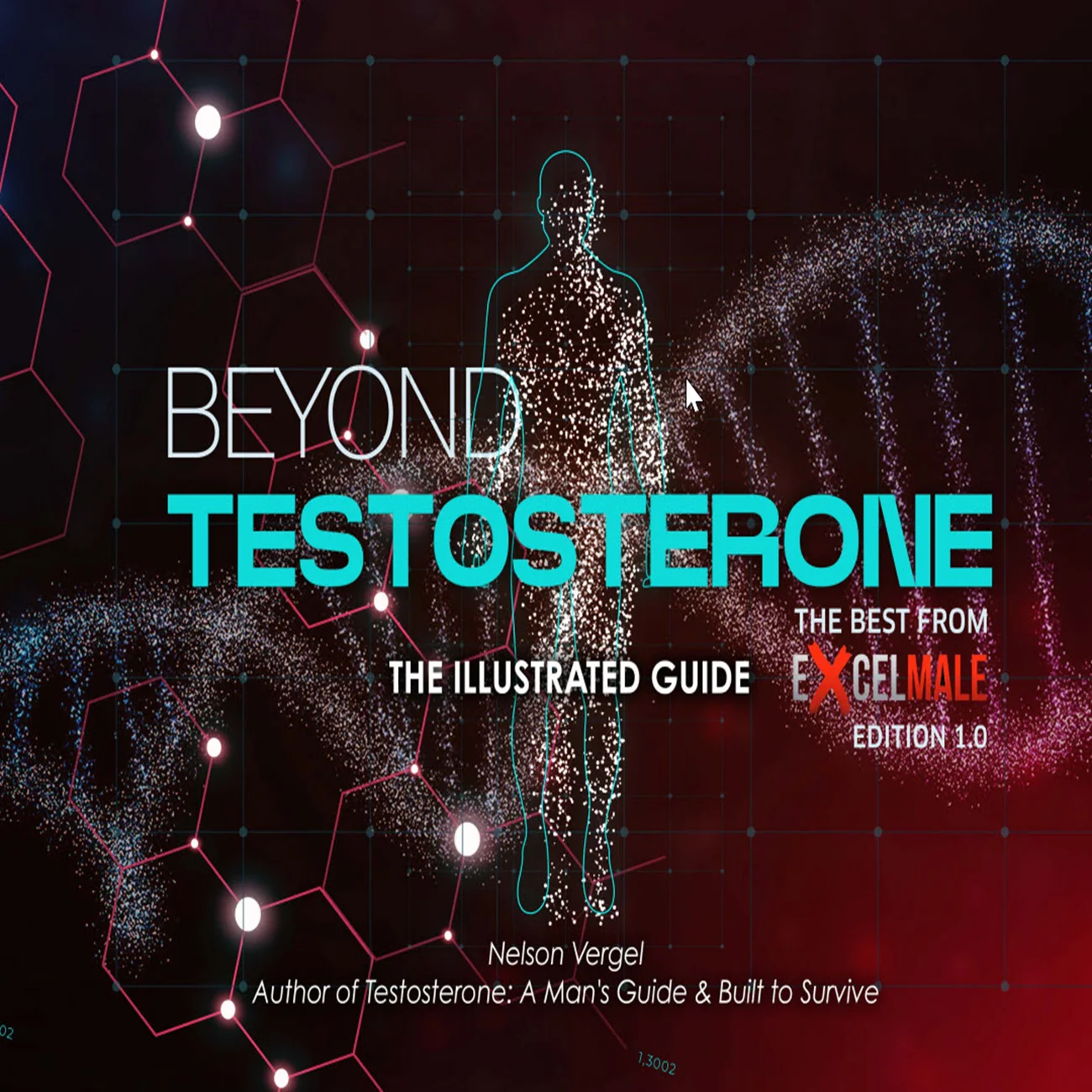Briefing Document: Iron Supplementation for Ferritin Management on TRT (The Vorck Protocol)
This briefing document summarizes key themes and facts from "Iron Supplementation Protocol to Raise Ferritin FAST While on TRT: The Vorck Protocol" found on the
Excel Male TRT Forum. The protocol primarily addresses low ferritin levels often experienced by men on Testosterone Replacement Therapy (TRT), particularly those who frequently donate blood to manage
high hematocrit (HCT) and hemoglobin (HGB).
I. The Vorck Protocol: Rapid Ferritin Restoration
The core of the discussion revolves around a specific iron supplementation protocol developed by FDV70 (referred to as "The Vorck Protocol") designed to rapidly increase ferritin levels.
- Mechanism: The protocol's efficacy hinges on understanding hepcidin, a hormone that regulates iron absorption and release. As FDV70 explains, hepcidin "binds to and degrades ferroportin, trapping iron in cells and blocking export of iron into serum. A large portion of that trapped iron will become ferritin." The goal is to elevate hepcidin sufficiently to encourage iron storage as ferritin, rather than primarily directing it to hemoglobin production.
- Key Elements of the Protocol (Short Version):
- Dosage: Three 60mg doses a day of Ferrous bisglycinate chelate.
- Timing: Doses spaced apart at 9 am, 3 pm, and 8 pm on the same day. "The times of day absolutely do matter."
- Duration: At least 3 days in a row.
- Initial Dose: Must be 60mg or higher. Subsequent doses may be 60mg or higher, but not exceeding 300mg per day.
- Crucial Exclusions: "You MUST NOT be taking vitamins C and D. Your Estradiol should ideally be 20-60pg/mL range." (Vitamins C and D are noted to "crush hepcidin").
- Reported Efficacy: FDV70 personally observed an increase of "ferritin 10 points in 3 days." Another user, xqfq, reported feeling "much better" and "like I am a new person" after 4 days on the protocol for suspected low ferritin due to diet and increased testosterone dose, though without lab confirmation.
- Application: The protocol is particularly useful "right after a donation" to restore ferritin to pre-donation levels. FDV70 states, "My ferritin drops 5 points with a donation of whole and 10 points with a double red donation. Most recently, my ferritin was at 26. I donated 455ml of RBCs, followed my post-donation protocol for 4 days, and my ferritin was at 28. My intention is to develop my protocol further with more days and use of Adenine. The point for now is that you can put ferritin back to where it was pre-donation."
II. Challenges of TRT and Iron Homeostasis
The discussion highlights common issues faced by men on TRT related to iron management, primarily the interplay between testosterone, hematocrit, hemoglobin, and ferritin.
- High Hematocrit (HCT) and Hemoglobin (HGB) on TRT: Many TRT users, like MedicineMan, experience HCT increases "regardless of dose," often necessitating frequent blood donations. This is a common side effect of TRT.
- Crashed Ferritin from Blood Donation: Frequent blood donation, while managing HCT/HGB, can lead to "crashed ferritin and iron." MedicineMan notes, "Eventually without donation, iron returns to mid normal range and ferritin stays low."
- The "Merry-Go-Round": The process of high HCT/HGB leading to donations, which then cause low ferritin, is described as a "donating merry go round" or "vicious cycle."
- Hepcidin's Role in TRT: FDV70 suggests that TRT exerts "downward pressure...keeping hepcidin low and my HGB going up." This explains why standard iron supplementation might not effectively raise ferritin in TRT users.
- Symptoms of Low Ferritin: While some users (e.g., MedicineMan) experience minimal symptoms from low ferritin, others report feeling "a little winded lifting weights and cardio" or general "lethargy."
III. Alternative Approaches and Related Discussions
The forum discussion also delves into other strategies for managing HCT and ferritin, and broader considerations for TRT dosing.
- Daily Low-Dose Iron (Theoretical): MedicineMan and FDV70's hematologist discussed whether "taking 30 mg of your specified iron supplement everyday long term could theoretically lower hematocrit and increase ferritin because daily dosing would increase hepcidin and therefore increase iron storage resulting in lower serum or blood iron levels?" However, FDV70 is cautious, noting one individual who had to donate earlier after trying daily iron, concluding, "I don't think daily iron can really keep H&H down -- I think we're going to have to use actual hepcidin itself, sub-q."
- Role of Apolactoferrin and IP6: MedicineMan reports seeing "a benefit from using Apolactoferrin and IP6. My hct lowered and stayed low over the summer." He notes switching to Colostrum (which contains lactoferrin) caused his iron to rise quickly, indicating its effect on iron levels.
- TRT Dosing and HCT: Cataceous advocates for exploring "more physiological levels" of testosterone to potentially mitigate HCT issues, suggesting that "you could cut your dose by up to 40% and still have adequate free testosterone." He questions whether "the extra testosterone is worth the hassle with hematocrit." MedicineMan, however, emphasizes optimizing for how he feels and his "free levels at the high end of normal," arguing that "dosage adjustments and frequency of injections made no difference" in his HCT.
- Ester Blends: Cataceous introduces the idea of using testosterone ester blends (e.g., propionate and enanthate) to "lower the dose while preserving higher peak testosterone levels," potentially mitigating HCT increases while maintaining beneficial peak T levels.
- Rusfertide and Hepcidin Agonists: FDV70 mentions Rusfertide, a "knock-off of human hepcidin," which "lowers the RBC's and HGB etc." He expresses hope for similar peptide companies to develop effective hepcidin agonists, potentially amplifying the effect of his protocol or providing a more direct solution to high HCT. He plans to order "bulk Adenine (hepcidin agonist)" to potentially "amplify the effect" of his protocol.
- Lack of TRT-Specific Studies: MedicineMan highlights a crucial gap: "The challenge is that we have to base all of our information and hypothesis on men who are not on trt. We need studies that focus on trt guys." This points to the need for more research tailored to the unique physiological responses of men on TRT.
IV. Conclusion
The Vorck Protocol offers a promising approach for rapidly raising ferritin levels in TRT users, particularly those who experience ferritin crashes due to blood donations. Its success relies on a precise understanding and manipulation of hepcidin. The broader discussion underscores the complex challenges of maintaining iron homeostasis on TRT, prompting further exploration into optimal dosing strategies, alternative supplements, and the potential of hepcidin-modulating agents to manage
high hematocrit without compromising iron stores.
What is the "Vorck Protocol" for iron supplementation, and what is its primary goal?
The "Vorck Protocol" is an iron supplementation strategy primarily designed to quickly raise ferritin levels, especially in individuals on Testosterone Replacement Therapy (TRT) who often experience low ferritin due to frequent blood donations or the effects of TRT. The short version of the protocol involves taking three 60mg doses of Ferrous bisglycinate chelate daily (e.g., at 9 am, 3 pm, and 8 pm) for at least three consecutive days. The main goal is to restore ferritin levels to pre-donation or healthy ranges, addressing the fatigue and other issues associated with low iron stores.
Why is it crucial to avoid Vitamins C and D while on the Vorck Protocol?
Vitamins C and D are explicitly recommended to be avoided during the Vorck Protocol because they are known to "crush hepcidin." Hepcidin is a hormone that regulates iron absorption and distribution in the body. While a reduction in hepcidin can increase the amount of iron in the blood (serum iron), which might seem beneficial for low iron, the protocol aims to increase
ferritin (iron storage). Hepcidin works by binding to and degrading ferroportin, which traps iron within cells, leading to its storage as ferritin. By suppressing hepcidin, Vitamins C and D would direct iron towards hemoglobin production rather than ferritin storage, counteracting the protocol's primary goal of raising ferritin.
How does hepcidin play a key role in iron absorption and storage, according to the protocol?
The protocol emphasizes that understanding hepcidin is crucial for raising ferritin. Hepcidin doesn't simply "block absorption"; rather, it binds to and degrades ferroportin. Ferroportin is a protein responsible for exporting iron from cells into the bloodstream. By degrading ferroportin, hepcidin effectively traps iron inside cells, preventing its release into the serum. A significant portion of this trapped iron then gets converted into ferritin, the iron storage protein. Therefore, by transiently elevating hepcidin (through the specific timing and dosage of iron), the protocol aims to increase iron storage within cells, thus raising ferritin levels.
What type of iron supplement is recommended, and what are the specific dosing instructions?
The recommended iron supplement is Ferrous bisglycinate chelate. The protocol advises an initial dose of 60mg or higher. For subsequent doses within the same day, 60mg or higher is also suggested. The specific dosing schedule is three doses per day, spaced apart (e.g., 9 am, 3 pm, and 8 pm), for at least three consecutive days. The total daily intake should not exceed 300mg. The timing of these doses is explicitly stated as being very important.
Can the Vorck Protocol help with high hematocrit (HCT) or hemoglobin (HGB) in TRT users?
While the protocol's primary focus is on raising ferritin, there was some initial observation and hope that it might also help lower HCT and HGB. The creator noted a temporary drop in HCT and HGB in his own labs after a few days on a twice-daily iron protocol. However, he was unable to reliably replicate this effect and states that the process is "too imprecise" for consistent HCT/HGB reduction. The underlying mechanism, hepcidin elevation, is theorized to be related to the action of drugs like Rusfertide (a hepcidin mimic) which do lower RBCs and HGB. However, the author concludes that daily iron supplementation is unlikely to consistently keep HCT and HGB down, suggesting that actual hepcidin (or its agonists like Rusfertide) would be needed for that purpose.
What are common challenges faced by TRT users regarding iron levels and blood donations?
Many individuals on TRT, especially those who frequently donate blood (whole blood or double red cell donations) to manage
high hematocrit, struggle with consistently low ferritin levels. The author of the protocol, having been on TRT since 2001, experienced this issue personally. The need for donations to control HCT/HGB often depletes iron stores, leading to "crashed ferritin" and the "donating merry-go-round." There's also a suspicion that TRT itself might contribute to lower ferritin by keeping hepcidin low, potentially even in TRT users who don't need to donate blood.
What is the role of Testosterone Replacement Therapy (TRT) in affecting iron levels and the need for this protocol?
TRT can lead to increased red blood cell production (erythrocytosis), which often results in elevated hemoglobin (HGB) and hematocrit (HCT). To manage this, many TRT users resort to frequent blood donations. While donations lower HCT/HGB, they also deplete the body's iron stores, leading to low ferritin. The protocol highlights that TRT can exert "downward pressure" on hepcidin, which would further hinder ferritin restoration. Therefore, the Vorck Protocol is specifically designed to address the iron deficiency (low ferritin) that often arises as a side effect or management consequence of TRT.
Are there any other alternative strategies or supplements mentioned for managing high hematocrit or low ferritin in TRT users?
While the Vorck Protocol focuses on rapid ferritin restoration through specific iron dosing, other strategies and supplements are mentioned in the discussion:
- Lowering TRT dose: Reducing the testosterone dose (e.g., from 200mg/week to 125mg/week or even lower) can help manage HCT, although some individuals find this impacts their free testosterone levels or overall well-being.
- Modified TRT dosing frequency: Daily or more frequent TRT injections (e.g., EOD - every other day) or using ester blends (like propionate/enanthate) are suggested to potentially allow for lower overall doses while maintaining peak testosterone levels, which might mitigate HCT issues.
- Apolactoferrin and IP6: One user reported that Apolactoferrin and IP6 helped lower and maintain their HCT, suggesting they might allow ferritin to gradually rise without rapid iron supplementation. However, switching to Colostrum (which contains lactoferrin) reportedly raised iron levels quickly.
- Adenine: The author intends to explore the use of bulk Adenine, a hepcidin agonist, to potentially amplify the effect of the protocol, hoping it will further aid in ferritin restoration and potentially impact HCT/HGB.
- Rusfertide: This is highlighted as a hepcidin mimic that successfully lowers RBCs and HGB, suggesting that a similar peptide might be a future solution for managing high hematocrit in TRT users.











